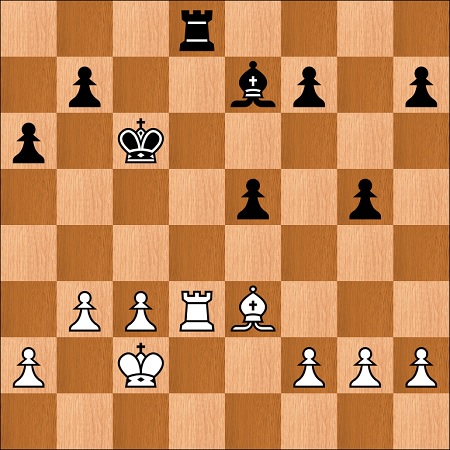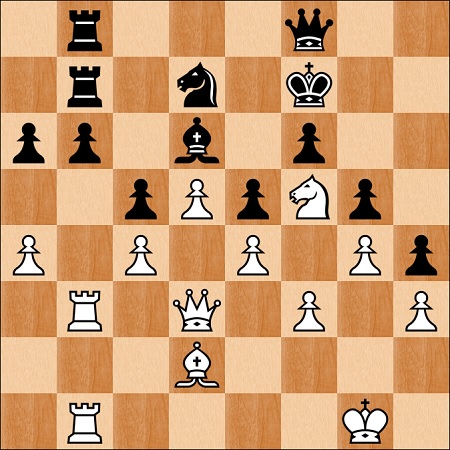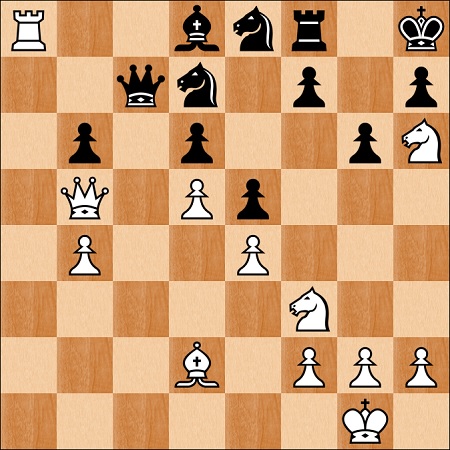In the September clinic there are games from the Kasparov line of the Rubinstein French (1.e4 e6 2.d4 d5 3.Nd2 dxe4 4.Nxe4 Nd7 5.Nf3 Ngf6 6.Nxf6+ Nxf6 and now 7.c3) and the Semi-Tarrasch (1.d4 Nf6 2.c4 e6 3.Nf3 d5 4.Nc3 c5). As usual, the games were taken from the Tiger Chess Themed Training Tournaments on Lichess, which are unrated and offer a chance to practice some key opening positions from Tiger Chess opening repertoires.
Here's a position from one of the games, Black has just played 22...e6-e5, a positional mistake which White now exploited. What would you do (see diagram)?

White played 23.g4!, sealing Black's pawns on dark squares so he could later penetrate with his king on the light squares. The game continued 23... Rh8 24.Bd2 h5 25.Rh3 h4 26.Rf3 f6 27.c4 Rd8 28.Rd3 b5 29.cxb5+ axb5 30.Rxd8 Bxd8 31.Kd3 Kd5 32.f3 h3 33.a4 bxa4 34.bxa4 Bc7 35.Be3 Ba5 36.Bf2 Bc7 37.Be1 Bb6 38.a5 Ba7 39.a6 Bb6 40.Bd2 Kc6 41.Be3 e4+ 42.Kxe4 Bc7 43.f4 Bd6 44.Kf3 Bb8 45.a7 1-0, which was a nice and strategically consistent win.
The Tigerchess.com Themed Training events are a great opportunity to practice key positions from regular openings, and are open to everyone who joins the Tiger Chess Team. Participating in these events helps players develop real insight into the openings played, above and beyond looking at them in a book or on a video.
Nigel Davies


